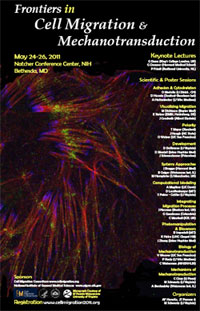We congratulate long-time NIGMS grantee Peter Walter of the University of California, San Francisco, on being recognized with the 2014 Albert Lasker Basic Medical Research Award for his elegant and insightful work on the signal that activates the unfolded protein response (UPR). He shares the honor with Kazutoshi Mori of Kyoto University in Japan.
For more than 30 years, we have funded the Walter lab to investigate how yeast cells control the quality of their proteins and organelles to maintain homeostasis. In the 1990s, at the time Walter was conducting the research that led to this award, we supported his studies of protein translocation and the signal recognition particle, which links the nascent protein chain to the endoplasmic reticulum, where folding then occurs. This work led, in part, to his research on the downstream events associated with protein misfolding and his identification of the key signal that activates the UPR.
The UPR mechanism adjusts as needed to maintain normal cellular function and prevent disease. Sustained overactivation of the UPR has been implicated in cancer, diabetes, autoimmune conditions, liver disorders and neurodegenerative diseases. Additional studies have shown that the UPR is highly conserved and present in every cell.
The Lasker Award to Walter, who’s also an HHMI investigator, is a strong endorsement of question-driven basic research and its role in revealing unpredicted, medically important pathways.


 Last week, NIGMS hosted the Frontiers in Cell Migration and Mechanotransduction meeting. It brought together an impressive group of scientists working at many levels, from molecules to cells, tissues and organs.
Last week, NIGMS hosted the Frontiers in Cell Migration and Mechanotransduction meeting. It brought together an impressive group of scientists working at many levels, from molecules to cells, tissues and organs.